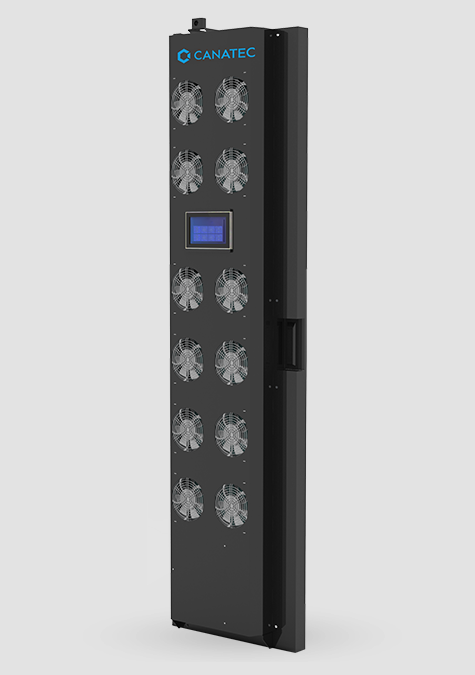
HOW IT WORKS
A rear door heat exchanger (RDHX) is mounted directly on the back of a server rack to remove heat at its source. Instead of allowing hot air to circulate into the data hall, the heat exchanger captures and cools it immediately, maintaining stable rack temperatures and reducing the strain on room-level air conditioning.
In a data centre environment, servers expel hot exhaust air from the rear of the rack. The rear door heat exchanger then captures and transfers the heat into a cooling medium such as water or refrigerant. By removing the heat at this stage, the system ensures that the air leaving the rack is already cooled before it re-enters the data centre environment, maintaining optimal operating conditions and improving overall cooling efficiency.
SYNERGY IN HIGH-DENSITY ENVIRONMENTS
This approach is becoming increasingly important in modern high-density data centres where rising demands generate far more heat than traditional cooling systems can efficiently handle. The Canatec Smart Panel addresses these challenges by providing targeted, rack-level cooling that scales with demand. It combines RDHX technology with high flexibility that allows integration with coolant distribution units (CDUs) and chilled water systems.
By optimising cooling performance at the rack level, the Smart Panel supports data centres in managing higher densities while maintaining efficiency and reliability.
Seamless integration into existing systems.
COOLANT DISTRIBUTION UNIT
Our Smart Panel RDHX works with a coolant distribution unit to create an efficient, closed-loop cooling path. The RDHX captures heat directly from the rack exhaust and provides real-time temperature readings, allowing the CDU to optimize coolant flow based on current demand. This setup removes heat at the rack level and maintains consistent performance across high-density racks.
CHILLED WATER
Our Smart Panel RDHX can connect to an existing chilled-water system without major changes to the data hall. The RDHX draws chilled water from the facility loop and uses it to cool rack exhaust air. An optional EPIV optimizes the flow required for cooling each individual rack. This approach supports higher thermal loads and improves cooling efficiency while maximizing the site’s current infrastructure.

Targeted rack-level cooling.
FLEXIBLE IMPLEMENTATIONPerfect for server racks that require more localized cooling without transitioning to a full liquid-cooled system. |
SEAMLESS INSTALLATIONHot air is contained within the server rack, therefore not requiring direct liquid-to-chip integration. |
SUPERIOR HEAT REMOVALRear door heat exchange systems provide heat removal at rack level, placing second in efficiency behind liquid cooling. |
MEDIUM-TO-HIGH DENSITYIdeal for environments that utilise AI or HPC, suitable for education, government and defense sector. |
Frequently Asked Questions about Rear Door Heat Exchanger
A rear door heat exchanger (RDHX) is a liquid or refrigerant-assisted cooling door mounted on the back of a server rack. As servers exhaust hot air, the RDHX transfers that heat into a closed coolant loop, so air leaving the rack is cooled before it re-enters the data hall. This reduces hot spots, stabilises inlet temperatures, and lowers the load on room-level cooling.
RDHX delivers rack-level heat removal, while room systems handle broader airflow and environmental control. Many facilities run RDHX alongside precision cooling to balance localised heat capture with whole-room temperature and humidity management, improving overall efficiency.
RDHX solutions are commonly deployed from medium to high rack densities. They are suited to environments running AI, HPC, and dense virtualisation where heat loads exceed what traditional perimeter systems manage effectively. Exact capacity depends on the door design, coolant temperature, and the facility’s water availability.
Typical integrations include a coolant distribution unit (CDU) or connection to a chilled-water loop, along with control valves, sensors, and leak detection. Routine maintenance focuses on water-quality management, filter checks, valve function, and sensor calibration to ensure consistent thermal performance.
RDHX is often regarded as a transitional approach to liquid-based cooling. It removes heat at the rack level without altering server hardware, making it a practical option for data centres that need higher density support today while planning for more advanced methods, such as in-row or direct-to-chip solutions. You can learn more about these approaches in our guide to liquid cooling systems.
